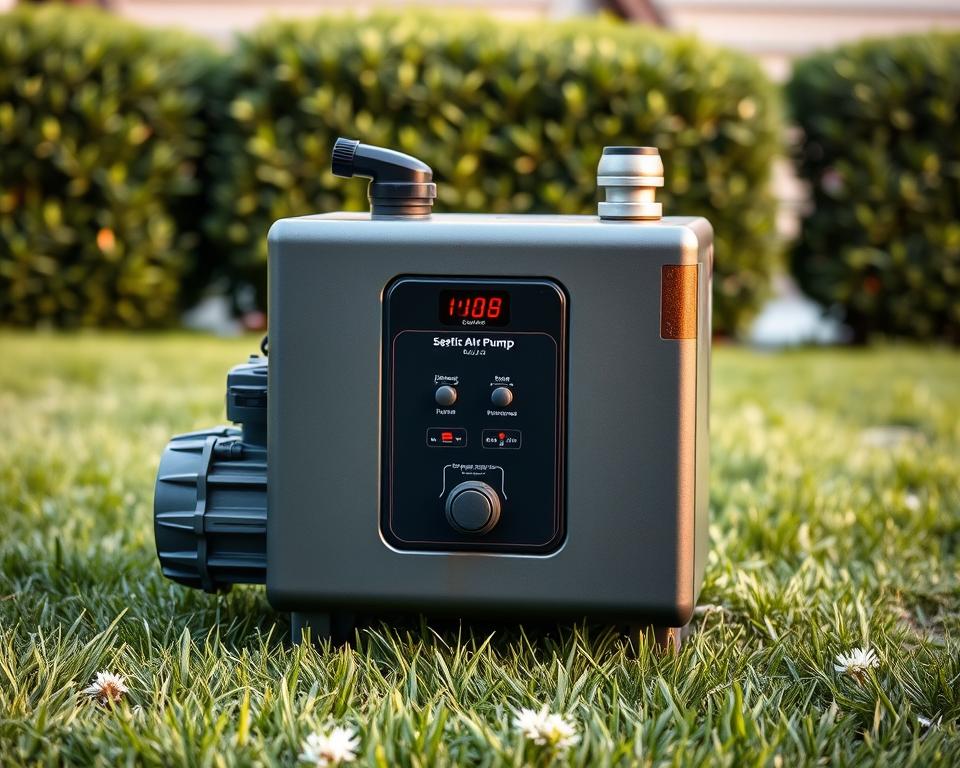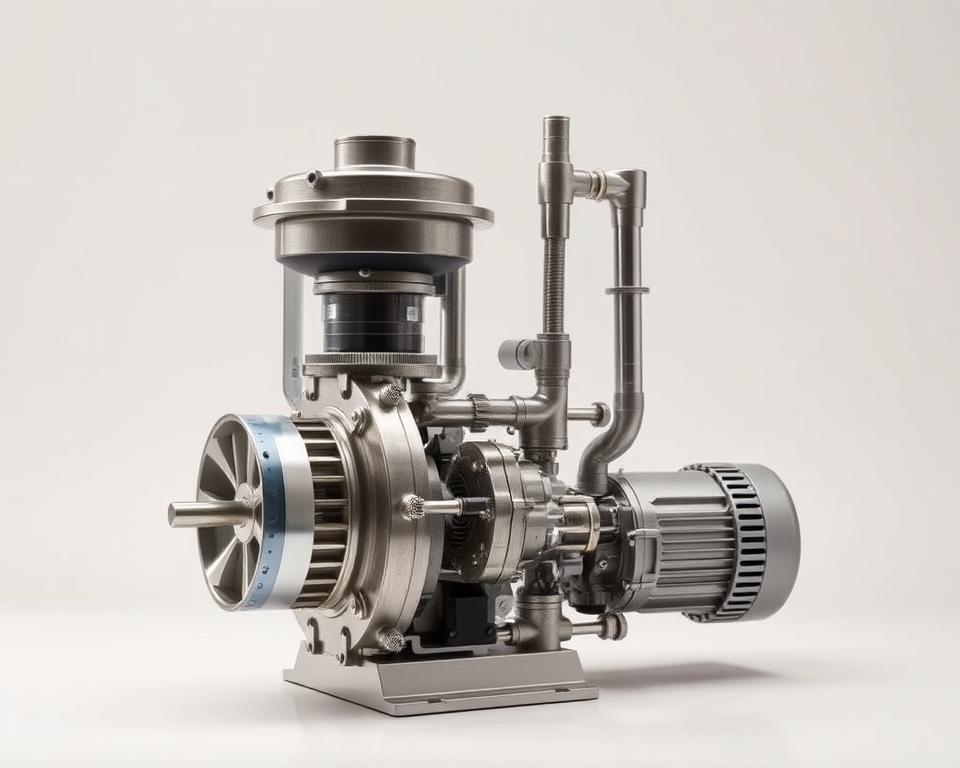How to Find Reliable Septic Tank Cleaning Companies Near Me in California City
Septic Aerator Pump: Complete Guide for Residential Users
Have you ever wondered what drives your aerobic Septic setup’s output? The Septic tank aerator is the often-overlooked hero indispensable for your system. With this resource, property owners will get useful knowledge on the air Pump’s importance. It’s critical for a well-functioning, well-run Septic tank.
Grasping the value of a Septic tank air Pump can enhance your Septic system’s capabilities using septic pumping companies. It also protects your asset value and ecological well-being. The resource below will feature All in Sanitation, a leading Septic industry leader. They’re equipped to meet your Septic aerator Pump requests.
Important Discoveries
- The Septic air Pump is crucial for aerobic Septic systems.
- Maintaining your Septic system air Pump can optimize overall system function.
- Scheduled assessments prolong the longevity of your Septic tank air Pump.
- Choosing the right Septic aerator Pump is essential for maximum operation.
- All in Sanitation delivers specialized services for Septic air Pump support.
Getting to Know Aerobic Septic Solutions
Aerobic Septic systems provide a enhanced waste treatment option by employing oxygen. This system employs aerobic bacteria living in well-oxygenated environments. These bacteria are more efficient in breaking down organic matter. With the help of Septic aerator Pumps, these systems deliver a steady oxygen supply, boosting the waste decomposition process.
These systems shine in decreasing sludge buildup, because of the activity of aerobic bacteria. This reduction in solid waste means reduced upkeep and tank Pump-outs is necessary. Additionally, they effectively manage wastewater, leading to barely any odor. This produces a healthier environment for homeowners and the community alike.
To ensure these systems operate efficiently, it’s necessary to recognize the key Septic system components. These include the Septic tank, oxygenation chamber, and effluent Pump. Each element has a crucial role, especially the air Pump. It forces oxygen into the tank, essential for the aerobic bacteria’s efficiency.
Importance of the Septic Air Pump
The Septic air Pump is central in the running of aerobic Septic systems. It serves as the system’s “oxygen source,” providing the needed oxygen required. This oxygen allows aerobic bacteria to thrive and break down waste efficiently. If the Pump malfunctions, the system’s efficiency diminishes, bringing about sludge collection and possible odors.
Such issues can interfere with Septic system operations and cause environmental hazards. By understanding how important the Septic air Pump is, homeowners can take proactive steps. They can secure its optimal function through regular maintenance. This wards off failures, reduces costly repairs, and protects the aerobic system’s integrity.
Major Benefits of Using a Septic Air Pump
Operating a Septic air Pump markedly increases the capability of Septic systems. Septic air Pumps are vital as they speed up the breakdown of waste. This is realized by oxygenating the treatment process, stimulating aerobic bacteria growth. These bacteria are necessary for efficient waste treatment.
They’re also important in reducing foul smells. Due to more active aerobic processes, waste breaks down faster, thus cutting down odors. This ensures better surroundings for homeowners.
Another significant benefit is the decrease in sludge formation. Consequently, tanks demand less frequent Pumping, conserving both money and time. Enhanced processing not only cuts expenses but also lengthens the lifespan of the drain field.
Maintaining these Pumps properly means minimal repair costs and meeting regulatory standards. Thus, the benefits of Septic air Pumps aren’t just for homeowners. They also support environmental health by optimizing waste management practices.
| Benefit | Description |
|---|---|
| Fast Waste Breakdown | Increased aerobic activity hastens the decomposition process. |
| Minimized Odor Emissions | Improved treatment efficacy results in fewer odors. |
| Reduced Sludge Buildup | Reduced Pumping and maintenance are necessary. |
| Extended Drain Field Life | Better treatment ensures a healthier drain field. |
| Cost Savings | Lower risk of repairs and regulatory compliance cost. |

Choosing the Right Septic Air Pump
Choosing the right Septic air Pump is essential for an efficient aerobic system. Homeowners ought to review various factors for the proper choice. The volume of the tank and the airflow demands significantly influence the Pump’s output.
To make an informed choice, it’s essential to recognize the air Pumps available. There are mainly two types: linear diaphragm Pumps and rotary vane Pumps. Each offers particular pluses, which should be aligned with your home’s particular demands and daily load.
Energy efficiency also should be considered. Selecting a Pump that minimizes energy use while supplying the needed airflow can offer meaningful reductions. Guidance from All in Sanitation experts can be priceless. They help ensure the Pump you choose matches your system’s requirements exactly.
Common Types of Septic Air Pumps
Homeowners can decide more effectively by recognizing the multiple Septic air Pumps available. There are mainly two types: diaphragm Pumps and rotary vane Pumps. Each has its unique functions and benefits.
Diaphragm Pumps, valued for their hushed operation, are commonly used for residential Septic systems. They maintain energy efficiency while providing steady air flow. Their constant performance suits smaller systems, attracting many homeowners.
Rotary vane Pumps, however, are well-suited for extended or commercial systems. These Pumps provide more power, essential in handling bigger loads. Their strong build ensures efficient operation in broad Septic systems.
| Type of Pump | Best Use | Advantages |
|---|---|---|
| Diaphragm Pumps | Residential Systems | Quiet operation, energy-efficient, reliable air flow |
| Rotary Vane Pumps | Larger or Commercial Systems | Powerful performance, high capacity, durable construction |
Appreciating the variations in Septic air Pumps is vital for upgrades or replacements. Each Pump type offers unique qualities to fulfil various needs. This provides peak performance for any system.
How to Tell You Need a Septic Air Pump Replacement
Homeowners must monitor Pump failure signs in their Septic systems. Some indicators show the need for a Septic air Pump replacement. These keep the system running smoothly. Spotting these quickly avoids major issues.
Signs of potential problems include:
- Unusual noises from the Pump, like scraping or trembling, might signal internal damage.
- A clear lack of air output reveals the Pump isn’t operating efficiently, reducing efficiency.
- Repeated electrical problems, such as circuit trips or lights dimming, could suggest overloading.
- Visible damage on the Pump unit, with breaks or leaks, calls for quick action.
- Offensive smells in the yard often indicate a compromised Pump, demonstrating ineffective effluent aeration.
Finding these signs early avoids high repair bills or total system failure. Scheduling consistent assessments makes it easy to catch these issues. It also clarifies if you need a new Septic air Pump.
Service Tips for Your Septic Air Pump
For an well-running Septic air Pump, periodic care is necessary. This makes sure that your system works smoothly. Homeowners can use several practical care strategies for optimal results.
Every six months, run a careful inspection for wear or damage. It is also crucial to swap out the filters as recommended. This prevents clogs that could lower efficiency.
The Pump should sit on a stable base to lessen vibrations, which could wear it over time. A protective cover is critical too. It protects against debris and water, preserving the Pump’s functionality.
Proper maintenance can significantly prolong the life of your Pump. In turn, this benefits the Septic system’s performance as a whole.
| Maintenance Task | Frequency | Benefits |
|---|---|---|
| Inspect Pump for damage | Every 6 months | Finds faults promptly |
| Replace filters | As needed | Keeps performance up |
| Check surface stability | Annually | Limits wear |
| Clear debris around Pump | Monthly | Prevents clogs |
Setting Up Your Septic Air Pump
Effective installation of your Septic air Pump is vital for its smooth operation. At the outset, choose a reliable, moisture-free area for placement. The chosen spot should reliably support the Pump’s weight with ease.
To successfully set up your Pump on your own, use the following guidelines:
- Prepare all necessary items, including the Pump, a power source, and hose fittings.
- Check the manufacturer’s guidelines before starting your installation.
- Confirm every connection is proper to prevent air leaks that reduce performance.
- After assembly, conduct a test to ensure the system works as intended.
If the installation process looks challenging, get in touch with All in Sanitation. Their professionals can circumvent common errors, confirming your setup meets strict safety requirements.
Advantages of Using All in Sanitation for Your Septic Air Pump Solutions
When deciding on a Septic service provider, the choice is significant. All in Sanitation sets itself by offering dependable Septic air Pumps. They serve different homeowner requirements with a wide selection of top-tier products. This makes sure customers secure an ideal match for their Septic systems.
What truly separates All in Sanitation is beyond their broad product lineup. Their commitment to outstanding customer service is equally significant. Homeowners enjoy expert advice, helping them choose trusted Septic solutions. This partnership is crucial to personalize each solution to fulfil specific needs.
All in Sanitation also focuses on aftercare to secure lasting satisfaction. Their promise continues beyond the initial sale. They supply ongoing support to maintain Septic systems running smoothly for the foreseeable future.
Expense Overview for Septic Air Pumps
Understanding the financial elements linked to Septic air Pumps is key for homeowners with aerobic Septic systems. Initially, one faces the price tag, which includes the Pump and associated accessories. Installation expenses differ, according to the system’s complexity and any changes required.
Ongoing upkeep forms an additional cost layer. Regular inspections can fend off bigger issues, ultimately leading to savings. Homeowners should allocate money for Septic maintenance to preserve the Pump’s effectiveness and life expectancy. Such planning helps dodge expensive repairs later on, illustrating the importance of proactive maintenance.
| Cost Component | Average Cost Range |
|---|---|
| Septic Air Pump | $500 – $1,200 |
| Installation | $300 – $800 |
| Annual Maintenance | $150 – $400 |
| Potential Repair Costs | $1,000 – $5,000 |
Dividing Septic air Pump expenses into separate parts assists homeowners in budget planning. This thorough approach guarantees the system’s consistent operation and their reassurance.
To Summarize
For homeowners with aerobic Septic systems, caring for Septic tanks is essential. The appropriate Septic air Pump improves waste processing and prolongs your system’s life. Practising regular upkeep and immediately resolving issues avoids large repair bills and disruptions.
Choosing a Septic air Pump requires careful thought. This guide highlighted how to select effectively about installation and replacement. With All in Sanitation’s guidance, you can handle your Septic systems’ complexities securely.
Looking after your Septic air Pump promotes your system’s operation and service life. It guarantees a efficient and optimal operation over time. Remember, your home’s wastewater management benefits greatly from proper care.


